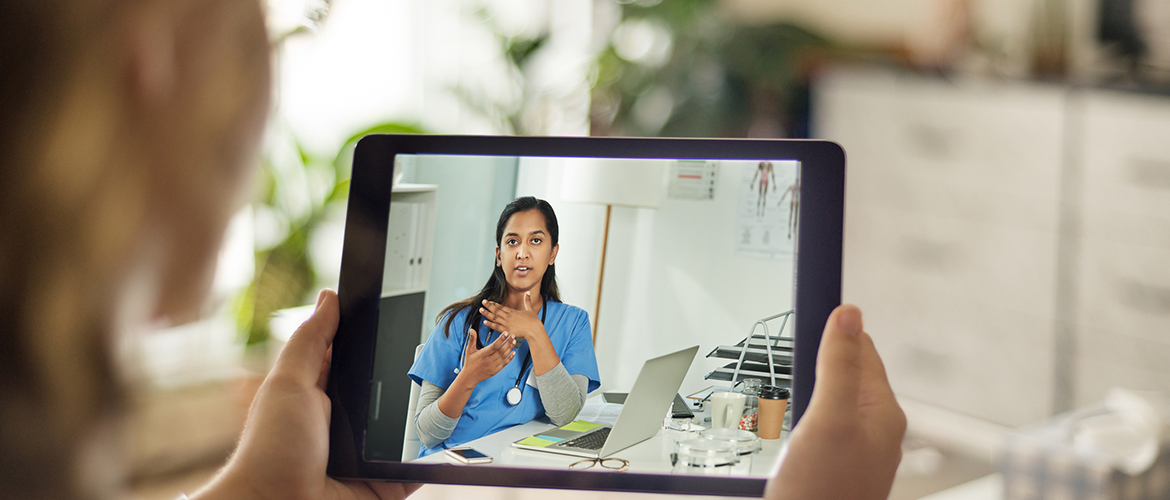Until several weeks ago, telemedicine was a small but growing way to take care of routine health needs. People liked the flexibility of setting up visits around their schedules rather making time to get to a doctor’s office or clinic.
That was then. This is now.
Safe access to care has become critical as the coronavirus that causes COVID-19 spreads across the country. Addressing minor medical issues and assessing symptoms for patients in the safety of their homes may reduce exposure to the coronavirus and save lives.
“Telemedicine is an important vehicle for delivering care,” says Joseph R. Cunningham, M.D., president of Blue Cross and Blue Shield of Oklahoma. “It can minimize the risk of exposure or infection for patients and providers.”
BCBSOK has modified its policies during the emergency to improve access to remote care. Fully insured members may access covered services as outlined in their benefit plan via telemedicine. They won’t pay copays, deductibles or coinsurance on these services from in-network providers during the declared emergency.
[Note: See the latest information from BCBSOK on COVID-19 coverage. Members with questions about their coverage or benefits can call the phone number on their ID card.]
During the past several weeks, federal and state officials have relaxed telemedicine regulations and implored almost everyone nationwide to use the technology when possible to reduce strain on busy health care facilities and emergency workers, save resources needed to treat sick patients and prevent exposure to the virus.
Telemedicine on the rise
Telemedicine, also called telehealth, allows doctors and patients to remotely consult about minor conditions and symptoms using smartphones and computers. Doctors and other health care professionals can prescribe routine medications or order refills for low-risk, long-term medications. They can also help manage chronic medical and behavioral health conditions.
“Telemedicine can offer convenience for members. They can get the care they need at the time that works with their schedule,” Cunningham says. “It can help overcome barriers such as lack of transportation and work schedules that don’t allow people to take time off.”
Technology, including the rise of smartphones and wider broadband availability, has improved access to telemedicine in the past five years, he says.
Use of telemedicine services in the U.S. has been limited but increased 53% from 2016 to 2017 — much faster than urgent care centers and retail clinics — according to a 2019 analysis of commercial insurance claims.
The COVID-19 crisis may lead many more Americans to try it.
The data science team for Blue Cross and Blue Shield Plans in Illinois, Montana, New Mexico, Oklahoma and Texas plans to measure how telemedicine use changes in response to COVID-19. They expect a dramatic increase.
After Hurricane Harvey struck the Texas Gulf coast in 2017, almost twice as many Texas members affected by the disaster used telemedicine to access health care than before Harvey’s devastation, says Lan Vu, a principal data scientist.
Sustained growth anticipated
Most people seek telemedicine visits for minor health issues like sinus headaches, sore throats, urinary tract infections and pink eye.
Now telemedicine provides the routine treatment they need while keeping them out of facilities teeming with sick patients and health care providers — who may already be short on masks, gowns and gloves needed to protect themselves from infection.
“The landscape has changed,” says Mindy Heintskill, chief marketing officer of MDLIVE, an independent company that provides access to Virtual Visits for many BCBSOK members.
Virtual Visits powered by MDLIVE increased 23% among BCBSOK members in March compared with the first two months of 2020.
“Not only is telemedicine about convenience,” Heintskill says, “it’s about staying well and keeping your family well.”

